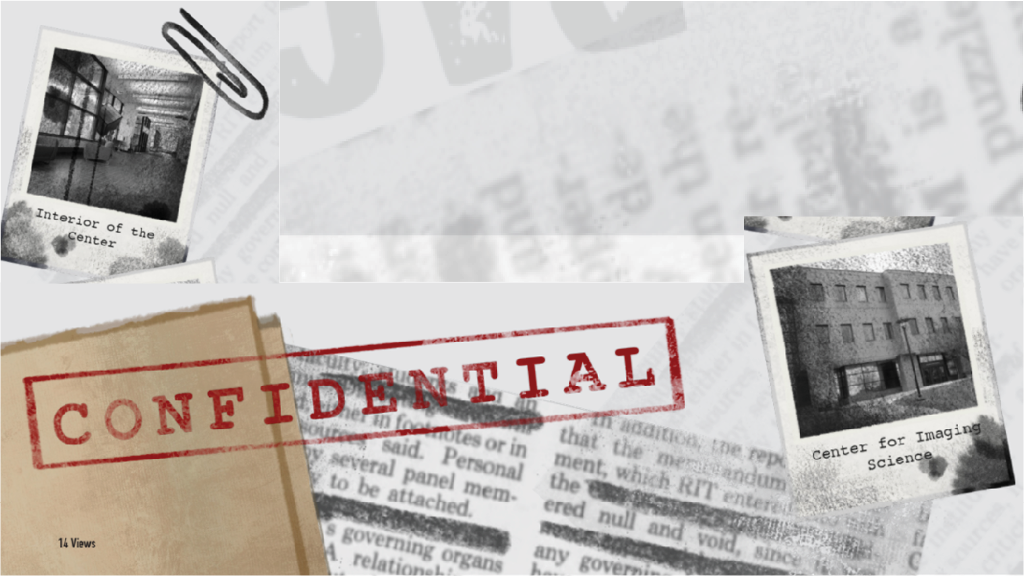On Feb. 7, 1991, then President of RIT Merle Richard Rose took a four-month sabbatical from RIT to work on a confidential assignment in Washington, D.C.
This event led to an investigation that revealed deep ties between RIT and the Central Intelligence Agency (CIA).
The RIT-CIA Chronicle
On May 16, 1991, the Democrat and Chronicle published the first in a series of investigative articles written by Jennifer Hyman.
The article discussed the RIT Research Corporation (RITRC) founded in 1980 as a for-profit subsidiary of the university that conducted proprietary research. Although the corporation was legally separate from RIT, it was staffed entirely by university faculty and students.
According to Hyman, the CIA had funneled several million dollars to the university and the RITRC. The university at the time had past ties with the CIA, which centered around the Center for Imaging Science.
The alleged CIA-sponsored research ranged from the extraction of intelligence from satellite images to document reproduction projects. Sources familiar with the project claimed it involved research into producing forged documents that were harder to detect.
Another article covered an alleged agreement brokered by Rose between RIT and the CIA. The document, known as the 1985 Memorandum of Agreement, revealed just how much influence the CIA had over educational programs at RIT.
In the memorandum, the CIA agreed to pay the salaries of members of the RITRC, so long as their work was deemed to directly benefit the agency. The CIA also provided “seed money,” money used to attract other government or industry bodies, to develop a “valuable source of trained individuals.”
CIA activity was not limited to financial support. The memorandum also dictated that the Center for Imaging Science was to set a curriculum that was “responsive” to the technical specialties useful to the CIA.
RIT's Investigations
On May 28, 1991, Rose announced the appointment of a “blue-ribbon” commission to investigate RIT’s links to the CIA.
After a series of protests questioning the bias of the commission, the blue-ribbon panel was replaced with a review panel composed of trustees, faculty, students and alumni.
The university hired Monroe H. Freedman, a professor of legal ethics at Hofstra University Law School, to serve as an independent “senior fact finder,” in the ongoing probe.
The panel’s findings were released to the public after a four-month investigation. The report concluded that RIT’s ties to the CIA were tighter than the administration of the time was willing to admit.
The Aftermath
The panel concluded that the 1985 Memorandum of Agreement — which had been dismissed by Rose as nothing more than a draft — effectively described RIT’s relationship with the CIA.
The investigation also found that Rose had repeatedly misled the school about the nature of his work. By then, Rose had already announced his resignation.
There is no doubt that during his time as president, Rose broadened the the influence and reputation of RIT. Rose's role in growing RIT into a center for research has been largely overshadowed by the entities that funded it.
With Rose's passing on April 10, 2021, the university is left to wonder how much of his legacy survives him.








